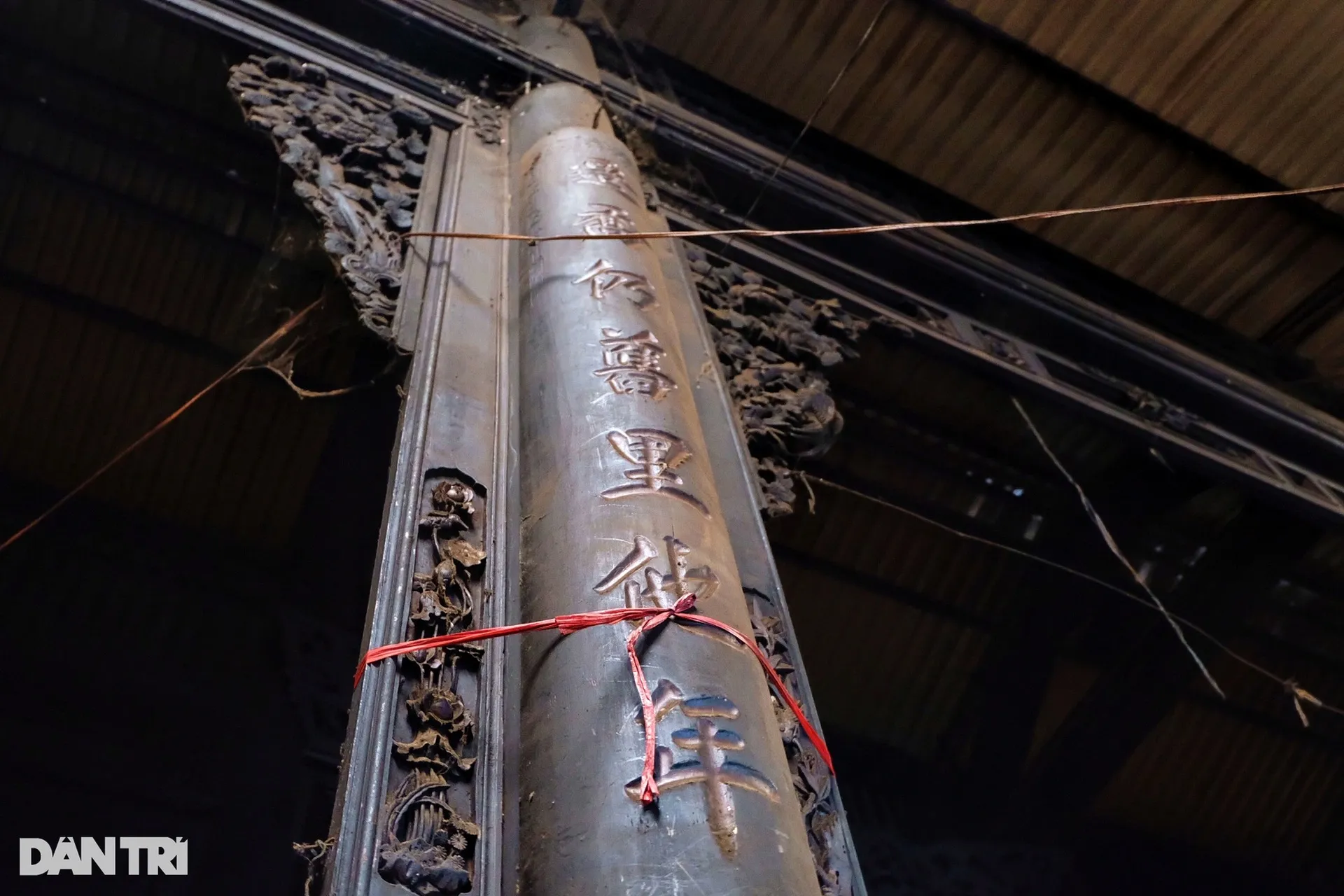Century-old houses in Vietnam are not merely unique architectural structures but also historical witnesses, preserving cultural values and memories across generations. They are precious gems that deserve to be cherished and conserved.
On Go Cong Street in District 5, Ho Chi Minh City, nestled among modern high-rise buildings, stands a century-old house. It is home to a large Chinese-Vietnamese family of nearly 20 members, a testament to the endurance of time and the vitality of traditional culture.
Timeless Architecture
At first glance, the house may seem old with its rusty gate. But stepping through the spacious courtyard, you will be amazed by its intricate and sophisticated architecture. The meticulous decorative patterns on the walls and the sturdy wooden columns all exude a sense of ancient beauty and elegance.
Mrs. Quach My (61 years old), a family member, said that the house was built by her husband’s grandparents. Although no one remembers the exact year of construction, her family estimates that the house is over a century old. According to Chinese tradition, the house was built large so that children and grandchildren could live together. The house has a ground floor and a mezzanine, along with a large front yard.
Cultural Beauty and Family Life
The main door of the house is large, leading into a foyer separated by an elaborate wooden partition. The wooden partition not only allows light to enter but also ventilates the space, creating an airy atmosphere. However, the traces of time are evident on the wooden partition with termite damage and warping.
The large wooden columns, covered in dust, still stand tall in the middle of the house, a testament to their steadfastness over time. Carved on the columns are parallel sentences and intricate patterns, reflecting the cultural and spiritual values of the family. This area used to be the ancestral shrine and the communal living space for the family.

Today, modern life has changed the family’s lifestyle. Family members are busy with work to make a living and have less time to gather. The ancestral shrine has now become a parking space, helping the family earn extra income. However, traditional values are still preserved in everyone’s hearts.
Preserving and Promoting Values
The house has a passage leading to the back, with small rooms on both sides, where families live. Inside the house, partitions have also been erected to divide rooms, to suit living needs. Despite being old and damaged in many places, the family still tries to repair and preserve the basic architecture of the house.
Old houses like these are not only the property of a family but also the cultural heritage of the entire community. Preserving and promoting their values is the responsibility of each of us. There is a need for supportive and encouraging policies so that families can maintain and preserve old houses, and at the same time turn them into attractive tourist destinations, contributing to promoting Vietnamese culture.
Other Old Houses Across Vietnam
Besides the old house in Ho Chi Minh City, Vietnam has many other old houses scattered across the country. Each house has its own beauty, associated with the history and culture of each region.
- Old houses in Hoi An: Wooden houses with yin and yang tile roofs and mossy yellow walls are symbols of Hoi An ancient town.
- Hue royal houses: Unique architectural works with complex wooden pillar and beam systems, showcasing the sophistication of imperial architectural art.
- Old houses in Duong Lam: Ancient laterite brick houses, imbued with the architecture of the Northern Delta region.
These old houses are not only places to live but also places to preserve the unique cultural, historical, and architectural values of Vietnam. They are “living museums” that need to be preserved and promoted so that future generations can better understand the past and appreciate traditional values.
Conclusion
Century-old houses in Vietnam are invaluable heritage that needs to be cherished and preserved. They are not only unique architectural structures but also historical witnesses, preserving cultural values and memories across generations. Let’s join hands to protect these “treasures” so that they may last forever. What do you think about preserving these architectural heritages?